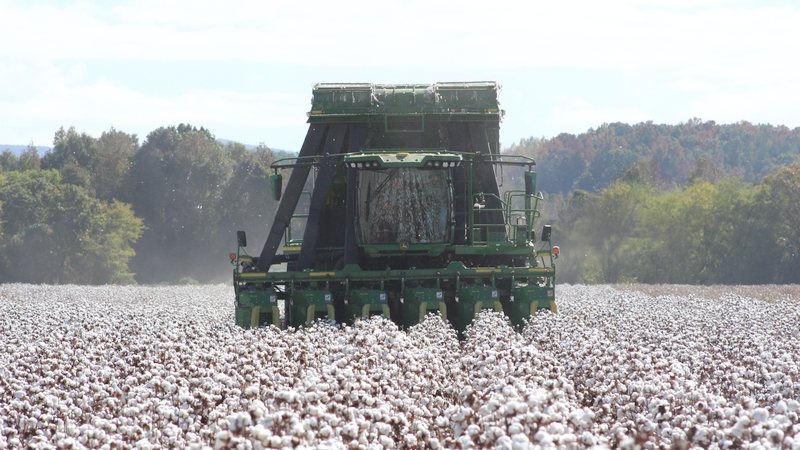Running At Full Speed
Last season, Glasscock County Co-Op ginned its first bale on October 25, 2000. It ginned its last bale on March 28, 2006.
For those 155 days, the gin ran 24/7, with the exception of every other Sunday. Even more amazing is that the gin, located 15 miles south of Garden City, TX — “the southern High Plains or the northern Rolling Plains,” as general manager B. J. Havlak describes the region — turned out 1,000 bales or more per day for over 100 days. Total bales ginned for the season reached almost 156,000.
“We planned for 100,000 bales,” says Havlak, a half-decade gin veteran. “I made the comment to a couple of our farmers that we had a chance to gin 100,000 bales.”
But the 2005/06 Texas crop was a warehouse-buster. In Havlak’s area, dry land and irrigated yields were almost identical — around 1,000 pounds per acre on both, with some of the best reaching 2-1/2 bales.
“We have never had a crop like that,” he continues. “There was nothing to compare it to. Our 5-year ginning average had been 50,000 bales per year and we tripled that last season.”
Glasscock County Co-Op was founded in 1969 as a farmer-owned cooperative, serving between 90,000-100,000 acres. It has seven growers on its board of directors.
Havlak started in the gin business “right out of high school in 1957.” He worked part time during the ginning season at Wall Co-Op (just east of San Angelo, TX) until the gin hired him full time in 1969. He joined Glasscock County Co-Op in 1972.
Be Prepared; Be Very Prepared
Havlak says if a gin manager came looking to him for advice on how to get that much cotton through the gin, haul the bales to the warehouse and haul the seed to the oil mill, the manager would be out of luck: “All you can do is get the gin in shape, prepare your module trucks and find good, hard-working employees who can work that long, and have loyal patrons.”
Every other week on Sunday, the gin “got some TLC.” The day and night shifts switched places (to be repeated in 2 weeks) and the gin was serviced.
“You would think we’d wear the gin out working like that,” says Havlak, “but we took care of it every other Sunday.”
Notice Havlak said “we” took care of it, which means he didn’t take a day off for those 155 days. “That was interesting,” he says. “We just kept plugging.”
The gin owns seven module trucks and hired three more. Seed and bale hauling is contracted out. There’s no seed storage on site, so when ginning reached its peak, truckers were hauling out over 1,000 bales and 22 loads of seed per day. Some of the seed was sold to local dairies.
The Modular World
After the 2003 season, the Co-Op’s board decided that the gin would no longer accept cotton in trailers.
“When we built this Continental Eagle plant in 1994, it was built strictly for modules. We don’t even have any suckers anymore,” says Havlak.
An older gin plant that was equipped with suckers was sold.
The current plant is equipped with four model 161 Continental Eagle stands, which were the biggest on the market at the time the gin was built.
The gin does not provide module covers and Havlak says his growers had a tough time finding enough: “We were taking anything we could find.”
But it does provide insurance that covers cotton from the time it leaves the stalk until it goes into the warehouse.
Moisture Controversy
Bale moisture content has been one of the polarizing, hot button issues lately. For Havlak, the ideal moisure content for cotton coming into the gin is 6%, and, depending on harvest-season weather, it normally averages between 4% and 12%.
Proponents of adding moisture say cotton that has less than 6% moisture is difficult to gin, creates static and is brittle. Critics say adding moisture is a just a cheap way to increase weight.
But Havlak says the critics have the motivation for adding moisture all wrong.
“You can look at it like a t-shirt,” he explains. “You take a dry t-shirt and ball it up. It won’t stay balled up. But if you put a little moisture on it, you can make the ball quite a bit smaller. Moisture makes the cotton compact easier.”









